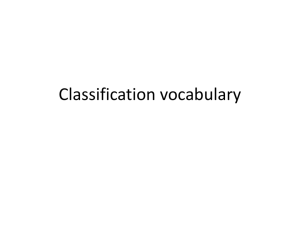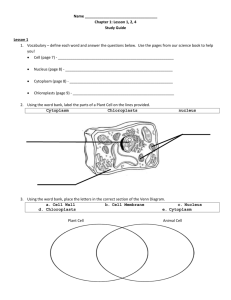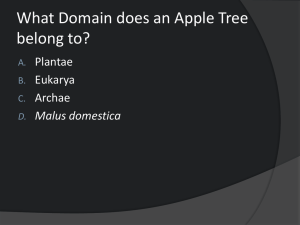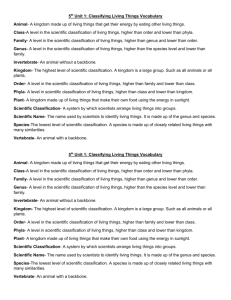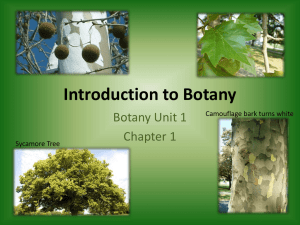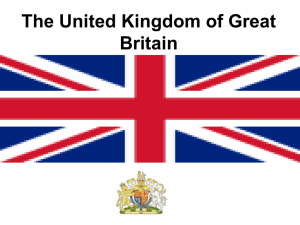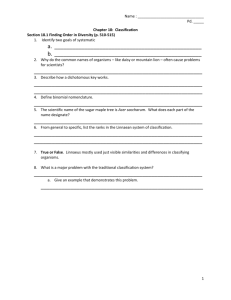Classification of Living Things Worksheet
advertisement
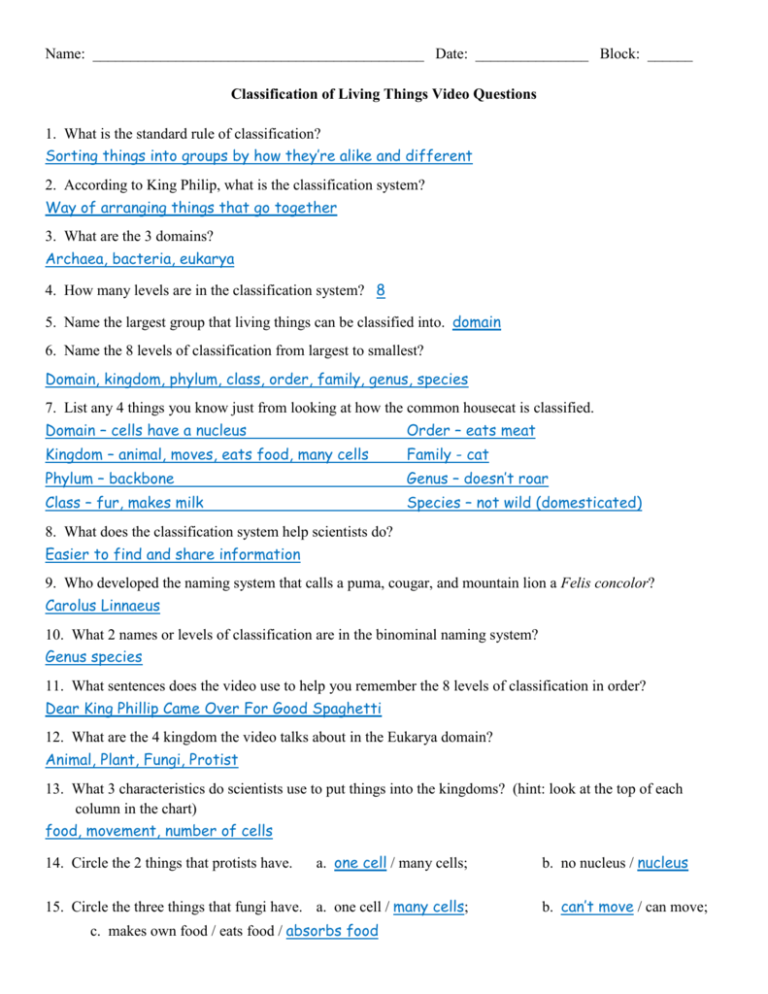
Name: ____________________________________________ Date: _______________ Block: ______ Classification of Living Things Video Questions 1. What is the standard rule of classification? Sorting things into groups by how they’re alike and different 2. According to King Philip, what is the classification system? Way of arranging things that go together 3. What are the 3 domains? Archaea, bacteria, eukarya 4. How many levels are in the classification system? 8 5. Name the largest group that living things can be classified into. domain 6. Name the 8 levels of classification from largest to smallest? Domain, kingdom, phylum, class, order, family, genus, species 7. List any 4 things you know just from looking at how the common housecat is classified. Domain – cells have a nucleus Order – eats meat Kingdom – animal, moves, eats food, many cells Family - cat Phylum – backbone Genus – doesn’t roar Class – fur, makes milk Species – not wild (domesticated) 8. What does the classification system help scientists do? Easier to find and share information 9. Who developed the naming system that calls a puma, cougar, and mountain lion a Felis concolor? Carolus Linnaeus 10. What 2 names or levels of classification are in the binominal naming system? Genus species 11. What sentences does the video use to help you remember the 8 levels of classification in order? Dear King Phillip Came Over For Good Spaghetti 12. What are the 4 kingdom the video talks about in the Eukarya domain? Animal, Plant, Fungi, Protist 13. What 3 characteristics do scientists use to put things into the kingdoms? (hint: look at the top of each column in the chart) food, movement, number of cells 14. Circle the 2 things that protists have. a. one cell / many cells; 15. Circle the three things that fungi have. a. one cell / many cells; c. makes own food / eats food / absorbs food b. no nucleus / nucleus b. can’t move / can move; a. one cell / many cells; 16. Circle the 3 things plants have. b. can’t move / can move; c. makes own food / eats food / absorbs food a. one cell / many cells; 17. Circle the 3 things animals have. b. can’t move / can move; c. makes own food / eats food / absorbs food a. one cell / many cells; 18. Circle the 3 things bacteria have. b. cell wall / no cell wall; c. nucleus / no nucleus 19. What domain are the recently discovered single celled organisms classified into? Archaea nucleus 20. What do protists have that bacteria don’t have? 21. Give an example of a protist. amoeba, algae 22. Give an example of a fungus. mushroom, mold, yeast, mildew 23. Fill in the blanks on the diagram for the Plant Kingdom. Plant Kingdom ___nonvascular____________ _____vascular________________ __________no seeds______ _____seeds______________ ________no flower_________ ___flower________ 24. The animal kingdom has ____16____ phyla or groups. 25. Fill in the blanks on the diagram for the Animal Kingdom. Animal Kingdom ____vertebrates__________ 26. What invertebrate group is the largest? ___invertebrates_________ insects 27. What do the Cnidarians have to protect them from predators? stinging cells 28. What are the 5 major classes in the phylum Chordata? fish, amphibians, reptiles, birds, mammals 29. What is the only mammal that can fly? bat 30. Why does the classification system change? to reflect new discoveries



